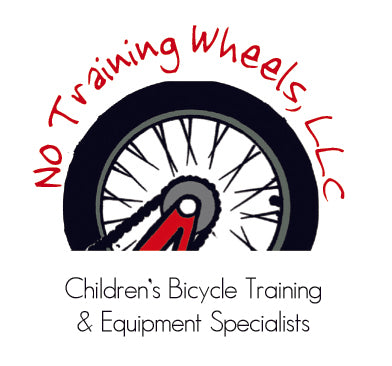Session 3 – Pedal Introduction
Add pedals with confidence—4 steps.
Welcome to Session 3!Phase 3A – Skills Test and Reinstall Pedals
Test balance, add pedals—ready to roll.Before jumping into pedaling, let’s make sure your child is ready. Here’s a quick skills test to check their balance and control:
- Can they coast (glide without touching the ground) for at least 10 seconds?
- Are they comfortable making turns while coasting?
Reinstalling the Pedals:
Once your child is ready, it’s time to put the pedals back on the bike. Make sure the bike is stable (you can lean it against a wall or have someone hold it), and follow these steps:
- Locate the pedals you removed earlier.
- Screw the right pedal into the right crank arm (clockwise).
- Screw the left pedal into the left crank arm (counter-clockwise).
- Tighten both pedals securely but not too tight—use a wrench if needed.
Phase 3B – Pedaling
First pedals—smooth start tips.Now that the pedals are back on, it’s time for the big moment: pedaling! This phase is all about helping your child get comfortable with pedaling while maintaining their balance. Here’s how to make it smooth and fun:
- Find the Right Spot: Choose a flat, open area with no obstacles (e.g., a driveway, empty parking lot, or quiet street).
- Starting Position: Have your child sit on the bike with one foot on the ground and the other on a pedal, ready to push.
- First Push: Encourage them to push off gently with their foot and start pedaling slowly. Remind them to look forward, not down at their feet.
- Practice Makes Progress: Start with short distances (e.g., 10-15 feet) and gradually increase as they gain confidence.
Common Challenges and Solutions:
- Wobbling: If they wobble, remind them to pedal slowly and keep their body relaxed.
- Starting Trouble: If they struggle to get going, try holding the bike steady while they practice pedaling in place.
- Nerves: If they’re hesitant, walk beside them, offering reassurance and support. Celebrate every attempt, no matter how small!
Tip: Make it a game! Set up a “finish line” with a cone or chalk mark and cheer them on as they pedal toward it. Keep it light and fun—learning to pedal is a big step!
Phase 3C – Braking
Stop safely—brake control basics.Braking is just as important as pedaling! This phase teaches your child how to stop safely and confidently. Let’s make sure they master brake control before they ride too far.
- Explain the Brakes: Show your child the brake levers on the handlebars (if their bike has hand brakes) or explain how to use coaster brakes (pedaling backward).
- Demonstrate: Squeeze the brakes gently to show how the bike slows down. If using coaster brakes, pedal backward slowly to demonstrate stopping.
-
Practice Braking:
- Start with slow pedaling.
- Have your child squeeze the brakes gently (or pedal backward) to slow down.
- Practice coming to a complete stop.
- Repeat, gradually increasing their pedaling speed as they get comfortable.
Key Reminders:
- Use both brakes together (if applicable) for smooth stopping.
- Avoid squeezing too hard to prevent skidding or sudden stops.
- Practice in a safe, open area until they’re confident.
Tip: Turn braking into a fun game! Set up a “stop zone” with chalk or cones and challenge your child to stop right on target. It’s a great way to build control and confidence.
Phase 3D – Session Review Summary
Recap—pedaling mastered!Congratulations on completing Session 3! Let’s take a moment to celebrate what your child has achieved:
- Passed the skills test and reinstalled the pedals.
- Started pedaling with confidence.
- Learned to brake safely and effectively.
- Took a big leap toward riding independently!
We’d Love Your Feedback!
Your input helps us improve and celebrate your child’s progress. Email us at trainingfeedback@notrainingwheels.com or ask our Tidio chatbot for a quick feedback form. We can’t wait to hear about your experience!
Next Up: In Session 4, we’ll focus on building riding stamina and introducing basic road safety. For now, keep practicing pedaling and braking until they feel second nature. You’re doing an incredible job—keep the fun rolling!
